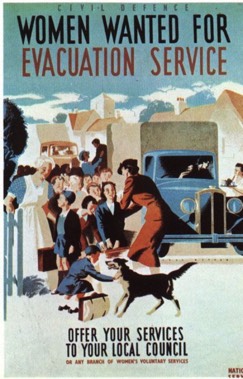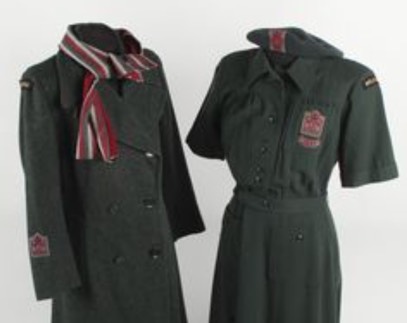Sign up for FlowVella
Sign up with FacebookAlready have an account? Sign in now
By registering you are agreeing to our
Terms of Service
Loading Flow

The WVS volunteers were often responsible for the running of salvage drives to generate raw materials for the war effort, including the collection of aluminium saucepans and kitchen utensils, and the removal of iron railings from public buildings. They also organised clothing exchanges where children's clothes could be swapped for larger sizes.
By the end of 1941, the WVS had enrolled its millionth member. Many were older women, as younger women were called up into the services or to do essential war work. It offered them an opportunity to use abilities and energies which before the war would have been contained in the home.
Apart from a small administrative staff, WVS members were unpaid and had to buy their own uniform. This was designed by the London fashion designer Digby Morton, and consisted of green coats and dresses with burgundy cardigans, green and burgundy scarves, and felt hats.
At the end of the war, the Home Office announced that the WVS should continue for 'possibly two years'. In fact, the WVS continues to this day, providing support in emergencies and carrying out welfare services, particularly for elderly people. In 1966 the organisation was awarded royal status, becoming the Women's Royal Voluntary Service (WRVS).


